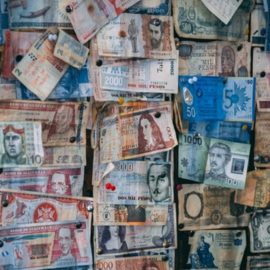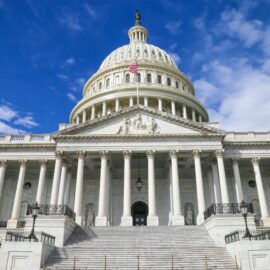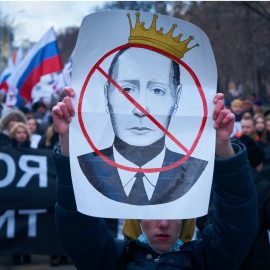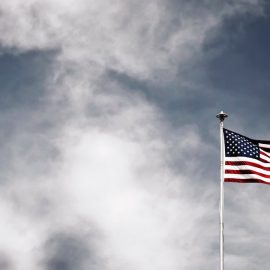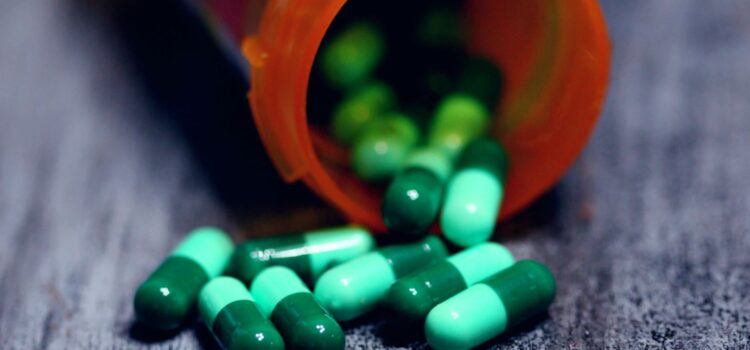
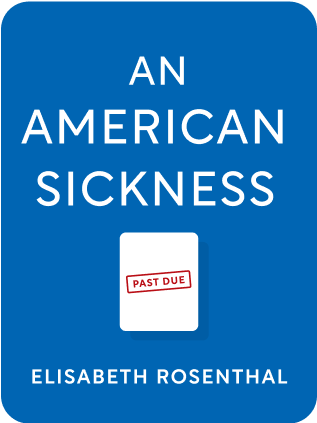
This article is an excerpt from the Shortform book guide to "An American Sickness" by Elisabeth Rosenthal. Shortform has the world's best summaries and analyses of books you should be reading.
Like this article? Sign up for a free trial here .
What is the market share of the U.S. pharmaceutical industry? How does the U.S. pharmaceuticals market compare to single-payer systems?
The U.S. is the largest market for pharmaceuticals, capturing the dominant market share in the world. In the U.S., Medicare is legally prohibited from negotiating prices with pharmaceutical companies. In contrast, single-payer systems like that in the UK have more leverage to choose a subset of drugs to support and squeeze prices down.
Keep reading to learn about the U.S. pharmaceutical industry, its history, and its drug approval process.
The History of U.S. Pharma
Here’s an abbreviated history of the U.S. pharmaceutical industry:
- 1906: The Wiley Act gave the U.S. Bureau of Chemistry regulation power over drug safety. Since few medicines did anything of note, the focus was on preventing harm.
- 1937: Sulfanilamide (an antibiotic for strep throat) was mixed with diethylene glycol and killed 100+ people. This prompted…
- 1938: The Food Drug and Cosmetic Act required testing before drugs could be marketed, and it prohibited false therapeutic claims.
- 1960: The anti-nausea medication thalidomide was given to pregnant women, but it caused birth defects in over 10,000 children in Europe with only 50% surviving. This tragedy led to…
- 1962: The FDA now enforced methods for clinical testing and required medicines to be proven “safe and effective” beyond placebo.
- Importantly, concerns about relative value were not addressed here—there was no need to be “safe and effective beyond existing drugs” or to be cost-effective.
- 1984: Drug companies complain that the drug approval process takes time away from the 20-year patent protection period. Drug prices are also rising. In response, the Hatch-Waxman Act was passed:
- Generic drugs got an easier path to approval. They didn’t need to fresh clinical trials, but rather just show chemical equivalence, and equivalence of bioavailability. This created the ANDA, or abbreviated new drug application.
- Manufacturers were given ways to extend patents, including:
- A 3-year extension to support a change in dose form
- 7-year exclusivity for orphan drugs (those treating rare conditions)
- 6-month extension for pediatric trials
- 5-year extension for claims of “time lost in regulatory review,” during which generic markers couldn’t submit applications
- 1980s: HIV concern led to rapid approval of AZT (1 human trial that lasted 19 weeks was sufficient for approval) and other antivirals. At the time, these became the most expensive drugs in history.
- What was likely driving up the price: high public demand, high insurer willingness to pay, lack of substitutes, perceived low market size by manufacturer.
- This created a new paradigm for acceptable limits of drug pricing.
Clinical Trial Strategies
Pharma companies use a few strategies to speed up clinical trials to get drugs approved.
Surrogate Measures
The HIV rush for drugs prompted the FDA to allow surrogate measures, or proxies for health (like blood markers) instead of actually proving that the drug cured symptoms over months or years.
Manufacturers promise to carry out follow-up studies, but there is no punishment for not doing so. Nor is there a mechanism to take drugs off the market if they later turn out to be inefficacious.
Orphan Drugs
Orphan drugs treat conditions affecting fewer than 200k patients. To incentivize pharma companies to develop treatments, orphan drugs get a few perks:
- Smaller clinical trials and shorter trials are allowed
- An approved drug bars the FDA from approving any other application for the same drug for the same disease for 7 years, even if the drug’s patent has expired. This limits generic competition.
For example, the melatonin analogue tasimelteon (Vanda) targeted Non-24, an orphan disease. It was approved despite not showing clinical advantages over melatonin.
The FDA’s Incentives
The FDA gets $2.5 million per drug application. Thus, the agency has incentives to receive more applications for me-too drugs, even if they improve little beyond what already exists.
Drug Advertising
The Supreme Court has protected drug advertising under free speech. The United States is only one of two countries allowing drug advertising, along with New Zealand. Other areas like the EU don’t allow commercial speech the same equivalence in free speech, considering drug advertising harmful to the public since it overpromises the benefits of wonder drugs.
Drug advertising began in the 1990s, with “help-seeking ads” where either the drug or disease could be mentioned, but not both. In 1997, ads could contain both the condition and the medicine, but it also had to include all side effects and contraindications.
Generics
After a drug patent expires, other companies can submit a generic drug for approval. Typically, these far lower the cost of the drug.
However, the process is convoluted.
- Before the patent expires, the generic manufacturer can seek approval.
- The first company to submit an ANDA has the exclusive right to marketing among ANDAs for 180 days.
- This does not block “authorized generics,” which are produced by the patent holder, are the same drug on a private label, and compete with the ANDA.
- However, filing an ANDA before the patent expires is considered “constructive infringement” of the patent. If the patent holder files an infringement suit, the FDA postpones the generic drug for 30 months, unless before that time the patent expires or is judged invalid/not infringed.
- The generic maker can then countersue. The parties may reach a settlement, and sometimes the generic maker accepts a payment to delay their introduction of their generic, which gives the patent holder more time to enjoy higher prices.
Generics aren’t a panacea for drug prices either. The economics for generics don’t always work out, causing competitors to pull out and leaving a single manufacturer with a virtual monopoly for a period of time. It’s said that 3 or fewer generic manufacturers are insufficient to provide price competition.
Strategies to Extend Patents and Fight Generics
When patents end, pharma companies don’t just call it quits. There are a variety of ways to enjoy continued exclusivity and to fight generics.
Product Hopping
By law, generics must be identical in dosage and form to the brand-name drug for a pharmacist to substitute them. States have different laws on the ability of pharmacists to substitute generics for brand-name drugs—some mandate substitution when possible, while others require patient consent.
To stymie the effort of pharmacies to substitute drugs, pharma companies will create new forms of the product to make it harder to substitute a generic with identical dosage and form. This is called “product hopping.” Here’s how it works.
Before their patent expires, the pharma company changes the form, dosing, and route of administration. For example, they might change from a pill that’s swallowed to a chewable pill. These changes require a new application to the FDA.
Then the pharma company destroys all previous forms of the drug, or they raise prices on the previous forms, to push prescriptions to switch to the new form, before generics arrive on the market. Finally, once the generic arrives, it can’t be directly substituted by the pharmacist.
This isn’t a total blocker. The doctor could theoretically prescribe the generic, even if it’s for the older dosage and form. But doctor habit, as well as low marketing from the generics, prevent this from fully happening.
This is said to illustrate market failure, since the brand name having a minor time lead leads to large long term sales differences. (Shortform note: some of the details came not from the book but from this useful FTC amicus brief.)
Take it Over the Counter
By law, the same product cannot be on the market as both a prescription and over-the-counter (OTC) product. Further, any company that takes a prescription drug to OTC gets 3 years of market exclusivity (since it requires submitting a new application with safety data).
Once a drug goes OTC, generics manufacturers have 6 months to use up supply.
The patent holder can then also patent a new formulation or molecule similar to the now OTC drug, and enjoy both OTC and prescription sales. For the drug Flonase, Glaxo employed both strategies.
Typically, drugs that go OTC need a large market size to make up for cheaper prices.
Other Tactics
As we’ve discussed, pharma companies sue generic makers or partner to delay the introduction of generics. Here are other tactics that can lead to protection of patented status.
They patent a new drug combination of two off-patent drugs. For example Duexis is the combination of ibuprofen and famotidine.
Pharma companies deliberately use different formulations that are more difficult to prove bioequivalence. For example, sprays, lotions, creams are more difficult to replicate than pills
Pharma companies strike long contracts with hospitals to take their branded drugs. This reduces the market size for new generics.
Pharma companies may even help promote information that suggests the generic substitute is dangerous. In the early 2000s, the anti-nausea drug Zofran faced competition with generic droperidol. Suddenly, the FDA issued a warning that droperidol may cause heart arrhythmias. The generics disappeared from the market, and suddenly only Zofran remained.
What to Do About Drug Costs
According to American Sickness, many Americans don’t fill prescriptions because of cost. Why? It’s difficult to do price comparisons, prices can change from month to month, and, depending on your insurance, it’s unclear what things will cost.
What You Can Start Doing Now
- Find good substitutes for your medicines.
- Avoid fancy formulations without clear benefit. This includes combinations of two generic medicines (like Duexis), extended release tablets, and creams.
- Get different doses that are cheaper, then change the number of pills you take. For example, you can get a double dose pill and cut pills in half.
- Shop at GoodRx.com for out-of-pocket cash prices of medicine. It may actually be cheaper than your copay.
- You are not required to use your insurance to buy medicine, despite what they tell you.
- GoodRx also has a Medicare drug pricing tool. Unfortunately, it has no private insurance cost data, because commercial insurers consider pricing data to be proprietary information.
- Consider buying medicine outside the U.S. This is technically against the law, but rarely prosecuted.
- Refill prescribed medicines when traveling abroad.
- Buy drugs that are over the counter abroad but not in the U.S.
- Buy from overseas mail-order pharmacies, especially for long-term medicines whose effects can be clearly measured (such as cholesterol or T2 diabetes drugs). If there’s anything wrong with the drug, it’ll show up quickly in lab testing. Check pharmacychecker.com to check for fakes. Source from English-speaking countries.
- Be skeptical of drug advertising.
- The drug ad does not convey efficacy or cost. More cost-effective generics may be available that don’t do marketing.
- Check GoodrX.com for cheaper and potentially equivalent options.
Systemic Changes to Demand
- Allow drug importation from vetted international pharmacies.
- Maine tried to allow mail-order drugs from pharmacies in English-speaking countries, with the strategy of declaring such pharmacies licensed in Maine. This was later repealed.
- Give pharmacists more prescribing power. They’re capable of prescribing straightforward medication like birth control pills, asthma inhalers, and thyroid pills.
- Doctors have resisted giving pharmacists prescribing powers, since this would encroach on doctors’ turf.
- Devise 3 classes of medicine—over-the-counter, prescription, and pharmacist dispensed.
- Reform the patent process to increase competition from generics.
- The Orange Book includes all patents that protect approved drugs. All patents in the book must be expired or litigated before a competitor can start production of generic. Require more selectivity for which patents are included in the Orange Book.
- The USPTO should restrict patents for drugs that do not offer true novelty or benefits, and shorten exclusivity for such drugs.
- For drugs that are true breakthroughs, give longer exclusivity.
- Reform the drug and device approval process.
- The FDA should require effectiveness over similar drugs for approval, not just beating a placebo.
- Reduce the cost of approval trials to allow lower-profit drugs on the market.
- For example, allow the use of study results from the EU.
- Require approval to cease production of a drug, if doing so would lead to a monopoly.
- How would this be implemented? The government could activate “march-in rights” to assign licenses to a new company to make the drug.
- Negotiate national prices for drugs.
- Medicare is forbidden from negotiating prices, due to drugmaker lobbying.
- Great Britain tells pharmacists how much they’ll be reimbursed for certain medicines; pharmacists then source drug from anywhere in the EU.
- The U.S. could peg drug prices to Canada.
- Promote cost-effectiveness research on drugs and devices.
- The Patient-Centered Outcomes Research Institute (PCORI) from ACA is prohibited from doing cost-effectiveness analysis.
- Insist that vendors estimate a price point from the very start of the FDA application process.
- Allow for cost-effectiveness research, then use said research to negotiate prices down.
- Discourage connections to pharma. This includes professional organizations and elected officials who take money from manufacturers.

———End of Preview———
Like what you just read? Read the rest of the world's best book summary and analysis of Elisabeth Rosenthal's "An American Sickness" at Shortform .
Here's what you'll find in our full An American Sickness summary :
- How U.S. healthcare got to the state it's in today
- Why it's so difficult to make any changes to the healthcare system
- What you can do to lower your personal healthcare costs

